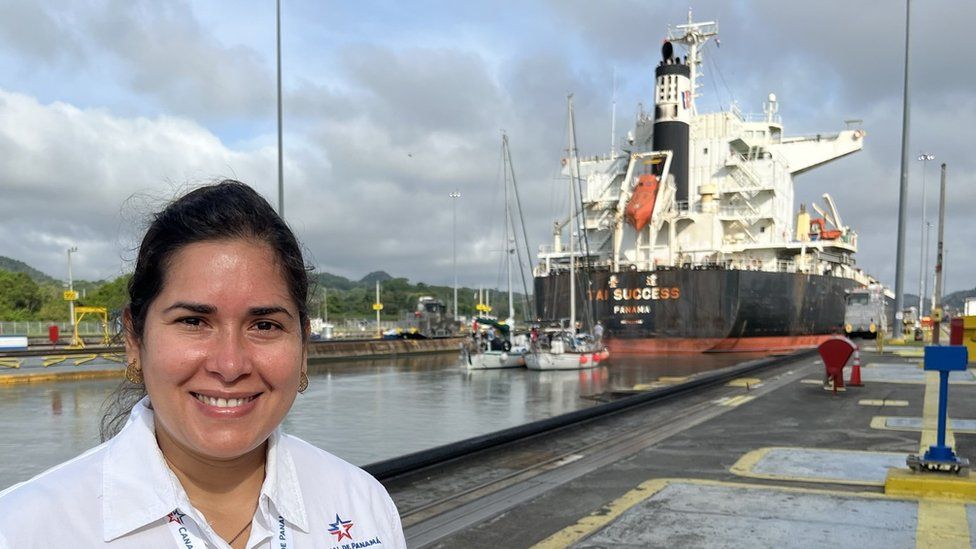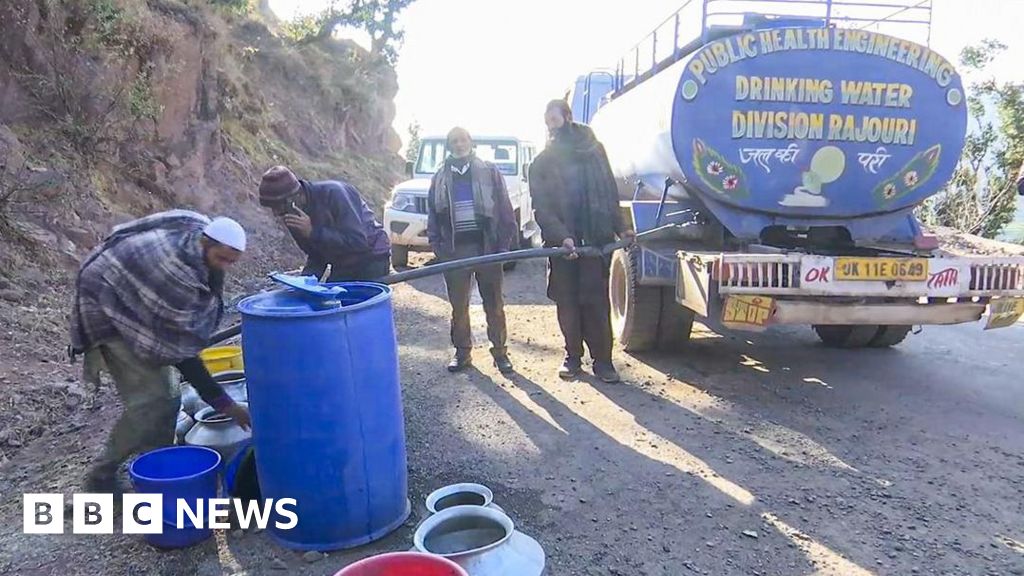ARTICLE AD BOX

Guide Mahelis de García explains the workings of the canal to visitors
Global warming and changing weather patterns are affecting the water supply for one of the world's most important waterways, the Panama Canal, as well as access to drinking water for millions of Panamanians, reports journalist Grace Livingstone from Panama City.
The Panama Canal is a great feat of 20th-Century engineering.
Upon its completion in 1914, this man-made waterway linking the Pacific and Atlantic Oceans nearly halved the travel time between the US West Coast and Europe.
To this day, ships have to pass through a series of locks to overcome the differences in height along its 50-mile (80km) length. They are lifted up to 85ft (26m) above sea level before being lowered again.
The canal's locks act as a kind of elevator, using enormous amounts of water released from artificial lakes at the top of mountains to raise the vessels, explains Mahelis de García, a Panama Canal guide.
How the Panama Canal was built
But as global warming affects weather patterns, operating the canal is becoming an ever greater challenge.
According to the Panama canal authorities, 2019 was the fifth driest year in Panama for 70 years with rainfall down 20% compared to the historic average.
But it is not only dry years that cause difficulties - heavy rain can also create problems as it can cause the artificial lakes to overflow.
As dry years and storms become more common, the canal needs to find fresh sources of water and new ways to store it.
Every time a ship goes through the locks, 55m gallons (250m litres) of fresh water is used, then released into the sea. On average, 37 ships go through the locks every day, using more than 2bn gallons (9bn litres) of fresh water.
The vice-president of water projects at the Panama Canal, John Langman, says they are working on finding solutions to ensure the canal does not run out of water.
John Langman says finding a solution to the water problem is a priority
"We understand that the canal is of huge significance to the Panamanian economy."
He explains that in the exceptionally dry year of 2019, the canal authorities had to reduce the amount of water they used to operate the locks, which meant that ships could not carry such heavy cargo because there was less water between the keel of the ship and the bottom of the canal.
To keep the locks functioning, the canal authorities are looking at ways to store more water in rainy years to ensure a sufficient supply in drier times.
They are carrying out feasibility studies on a number of options including deepening existing artificial lakes to capture more rainwater.
Mr Langman says they will aim first to find a solution within the watershed around the canal, but they may have to look at water sources in other parts of the country.
None of the options are easy.
One possibility that canal authorities are studying is building a dam on the river Indio, in the province of Coclé in central Panama.
But this could displace thousands of small farmers, and it has worried Diego Herrera, who farms 40 hectares of land with his family in Coquillo.
Diego Herrera is concerned that he could be displaced from his family's farm if a dam were constructed
"What will we do if they flood our land? Where will we go? They haven't explained to us where they will relocate us."
It is important to emphasize that this dam is only one of many possible options under consideration, and the canal authorities stress that they will opt for a solution that has the lowest environmental and social impact.
The search for water sources is not just about ships and commerce.
The Panama Canal Authority also supplies drinking water to half of the Panamanian population, including the residents of the capital, Panama City.
The drinking water comes from the same artificial lakes that is used to run the locks.
The Panama Canal Authority is considering desalinating sea water for human consumption, enabling more of the water in the artificial lakes to be used for the canal.
Environmentalist and former deputy mayor of Panama City, Raisa Banfield, says that as the population of the city grows, with more buildings constructed and forest areas depleted, there is increasing pressure on Panama's water resources.
Image source, DEA / V. GIANNELLA via Getty
Image caption,Pressure on Panama City's water resources is growing
Climate change is making the search for solutions urgent.
The Panama Canal has extremely good meteorological data because it has been monitoring rainfall since 1880.
Steven Paton, a scientist at the Smithsonian Tropical Research Institute in Panama, says this 142 years of data shows changes in rainfall that are consistent with climate change.
He says that in the past 25 years, "we've had eight of the 10 greatest storms, the two driest years and the driest three years in a row, in which the average rainfall was lower than in any other three-year period. We've set all kinds of records."
He adds that weather patterns are becoming less predictable: for example 2022 has seen the earliest start to the rainy season in Panama since records began.
"There's no analogue to what's happened this year," he says.
The original steel-plated gates made over 100 years ago are still opening the locks to ships from around the world, but as rainfall patterns change it is becoming more and more difficult to source the water to operate the canal.

 2 years ago
49
2 years ago
49








 English (US) ·
English (US) ·